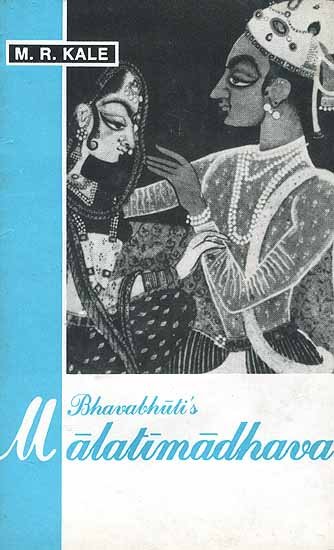Malatimadhava (study)
by Jintu Moni Dutta | 2017 | 52,468 words | ISBN-10: 8120813057 | ISBN-13: 9788120813052
This page relates ‘Vira Rasa (The Heroic Sentiment)’ from the English study on the Malatimadhava of Bhavabhuti:—A Prakarana type of Drama in ten acts revolving around the love-story of Malati (from Padmāvatī) and Madhava (from Vidarbha). This study discusses the history of its author and the literary, social, religious, historical and cultural aspects of the Malatimadhava.
Part 1.3d - Vīra Rasa (The Heroic Sentiment)
The Vīra rasa or heroic sentiment relates to the superior type of persons and has utsāha or energy as its basis. This is created by vibhāvas or determinants such as presence of mind, perseverance, diplomacy, discipline, military strength, aggressiveness, reputation of might, influence . Anubhāvas of this rasa are firmness, patience, heroism, charity, diplomacy etc and contentment, judgement, pride, agitation, energy, ferocity, indignation, remembrance, horripilation are its vyabhicāribhāvas.[1]
In the 3rd act of the Mālatīmādhava, Bhavabhūti spontaneously delineates Vīra rasa through the gallant deeds of Makaranda where he rescues the very life of Madayantikā from the clutches of the tiger.[2] Again, in the 5th act Bhavabhūti has delineated Vīra rasa in the context of Mādhava and Aghoraghaṇṭa where Aghoraghaṇṭa has lifted his weapon in order to kill Mālatī but at that very moment Mādhava appears there and snatches away Mālatī by his fore-arm.Thus, Mādhava exhibits his heroism by saving the life of Mālatī from the hands of Aghoraghaṇṭa.
In the verse maraṇasamaye tyaktvā śaṅkāṃ pralāpanirgalam............[3] etc Mādhava tries to avert the fear of death from Mālatī’s mind by expressing his valour.
Moreover, in the verse vyāghrāghrātamṛgikṛpākulam.....................[4] etc. the expression of extreme cruelty of Aghoraghaṇṭa towards Mādhava is found. Aghoraghaṇṭa says that he would cut off the body of Mādhava by a stroke of his sword as he has fallen in to his clutches who is fond of killing.
In the same manner, by the verse dhairayam nidhehi hṛdaye...................[5] etc Mādhava expresses his valour to Mālatī. Here, the enemy, Aghoraghaṇṭa is the main exciting cause i.e. ālambanavibhāva, the action of that enemy is the uddīpanavibhāva, the valour of Mādhava is the anubhāva, Mādhava’s anger is the vyabhicāribhāva. Hence, the verse is an example of Vīra rasa.
Footnotes and references:
[1]:
atha vīronāmauttamaprakṛitirutsāhātmakaḥ/
sa cā saṃohādhyavasāyanayavina yavala parākramaśaktipratāpa prabhāvādibhirvibhāvairutpadyate /
tasya sthāyiryadhairya śorya tyāga vaiśāradyādibhiranubhāvairabhinayaḥ prayoktavyaḥ
bhāvāscāsya dhṛtimati garvāvegaugryāmarṣasmṛtiromāñcādayaḥ /
Nāṭyaśāstra,VI.p.324
[2]:
[3]:
